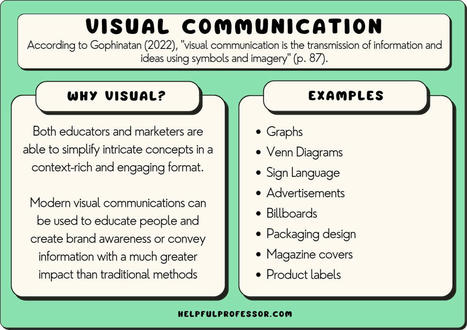Visual communication means the transfer of information to a person in a format that can be read or viewed. Such formats include physical objects and models, charts, cards, tables, photos, videos, drawings, and diagrams. Today,
Research and publish the best content.
Get Started for FREE
Sign up with Facebook Sign up with X
I don't have a Facebook or a X account
Already have an account: Login
An online magazine by Bovee & Thill, authors of the leading textbooks in business communication and business writing, published by Pearson, featuring resources about visual communication, data visualization, including graphic design, photography, and presentations. For more information about Bovee & Thill's texts and their exclusive, superior coverage of visual communication, visit http://boveeandthillbusinesscommunicationblog.com. For instructor examination copies, go to http://blog.businesscommunicationnetwork.com/texts. To find your local sales representative, go to http://www.pearsonhighered.com/educator/replocator. To contact the authors, use this form: https://businesscommunicationnetwork.com/contact-us/. To get a free Comprehensive Guide to Business Communication Instructional Resources, visit http://blog.businesscommunicationnetwork.com/resources. Subscribe to a free weekly newsletter of new posts to all 11 of Bovee & Thill's Online Magazines: http://sco.lt/8kgeVV.
 Your new post is loading... Your new post is loading...
 Your new post is loading... Your new post is loading...
No comment yet.
Sign up to comment
|
|










